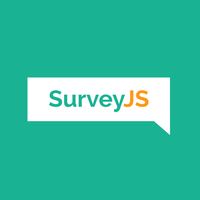regression-js
Pandas
Our great sponsors
| regression-js | Pandas | |
|---|---|---|
| 2 | 393 | |
| 927 | 41,863 | |
| - | 1.3% | |
| 0.0 | 10.0 | |
| over 1 year ago | 2 days ago | |
| JavaScript | Python | |
| MIT License | BSD 3-clause "New" or "Revised" License |
Stars - the number of stars that a project has on GitHub. Growth - month over month growth in stars.
Activity is a relative number indicating how actively a project is being developed. Recent commits have higher weight than older ones.
For example, an activity of 9.0 indicates that a project is amongst the top 10% of the most actively developed projects that we are tracking.
regression-js
- Data Science with JavaScript: What we've learned so far?
-
Hal9: Data Science with JavaScript
Modeling: We are currently exploring this space so our findings are not final yet but let me share what we've found so far. TensorFlow.js is absolutely amazing, it provides a native port from TensorFlow to JavaScript with CPU, WebGL, WebAssembly and NodeJS backends. We were able to write an LSTM to do time series prediction, so far so good. However, we started hitting issues when we started to do simpler models, like a linear regression. We tried Regression.js but we found it falls short, so we wrote our own script to handle single-variable regressions using TF.js and gradient decent. It actually worked quite well but exposed a flaw in this approach; basically, there is a lot of work to be done to bring many models into the web. We also found out Arquero.js does not play nicely with TF.js since well, Arquero.js does not support tensors; so we went on to explore Danfo.js, which integrates great with TF.js but we found out it's hard to scale it's transformations to +1M rows and found other rough edges. Since then, well, we started exploring Pyodide and perhaps contributing to Danfo.js, or perhaps involve more server-side compute, but that will be a story for another time.
Pandas
-
Deploying a Serverless Dash App with AWS SAM and Lambda
Dash is a Python framework that enables you to build interactive frontend applications without writing a single line of Javascript. Internally and in projects we like to use it in order to build a quick proof of concept for data driven applications because of the nice integration with Plotly and pandas. For this post, I'm going to assume that you're already familiar with Dash and won't explain that part in detail. Instead, we'll focus on what's necessary to make it run serverless.
-
Help Us Build Our Roadmap – Pydantic
there is pull request to integrate in both pydantic extra types and into pandas cose [1]
-
Stuff I Learned during Hanukkah of Data 2023
Last year I worked through the challenges using VisiData, Datasette, and Pandas. I walked through my thought process and solutions in a series of posts.
-
Introducing Flama for Robust Machine Learning APIs
pandas: A library for data analysis in Python
-
Exploring Open-Source Alternatives to Landing AI for Robust MLOps
Data analysis involves scrutinizing datasets for class imbalances or protected features and understanding their correlations and representations. A classical tool like pandas would be my obvious choice for most of the analysis, and I would use OpenCV or Scikit-Image for image-related tasks.
-
What Would Go in Your Dream Documentation Solution?
So, what I'd like to do is write a documentation package in Python to recreate what I've lost. I plan to build upon the fantastic python-docx and docxtpl packages, and I'll probably rely on pandas from much of the tabular stuff. Here are the features I intend to include:
- Read files from s3 using Pandas/s3fs or AWS Data Wrangler?
-
10 Github repositories to achieve Python mastery
Explore here.
-
Interacting with Amazon S3 using AWS Data Wrangler (awswrangler) SDK for Pandas: A Comprehensive Guide
AWS Data Wrangler is a Python library that simplifies the process of interacting with various AWS services, built on top of some useful data tools and open-source projects such as Pandas, Apache Arrow and Boto3. It offers streamlined functions to connect to, retrieve, transform, and load data from AWS services, with a strong focus on Amazon S3.
-
How to Build and Deploy a Machine Learning model using Docker
Pandas
What are some alternatives?
Cubes - [NOT MAINTAINED] Light-weight Python OLAP framework for multi-dimensional data analysis
tensorflow - An Open Source Machine Learning Framework for Everyone
orange - 🍊 :bar_chart: :bulb: Orange: Interactive data analysis
Airflow - Apache Airflow - A platform to programmatically author, schedule, and monitor workflows
Keras - Deep Learning for humans
Pytorch - Tensors and Dynamic neural networks in Python with strong GPU acceleration
pyexcel - Single API for reading, manipulating and writing data in csv, ods, xls, xlsx and xlsm files
SymPy - A computer algebra system written in pure Python
Dask - Parallel computing with task scheduling
NumPy - The fundamental package for scientific computing with Python.
blaze - NumPy and Pandas interface to Big Data
Scrapy - Scrapy, a fast high-level web crawling & scraping framework for Python.
